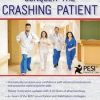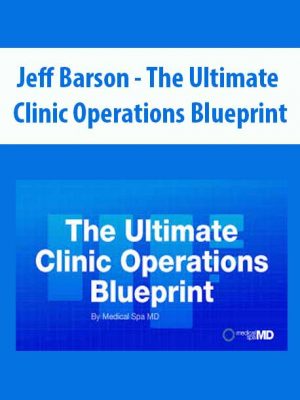Infection Control Challenges: Real Risks for Patients and Staff – William Barry Inman
$200.00 Original price was: $200.00.$56.00Current price is: $56.00.
Proof of item:
Barry Inman, BA-BS, CIC, will share practical solutions to a variety of “what if” infectious disease scenarios that healthcare professionals confront routinely. So many questions can and do arise when it comes to the safety and health of your patients, yourself…and even your family! Are your confident in your responses…
- One patient with an ileal conduit urinary system that, when cultured, revealed microorganisms. Should the treatment include antibiotics…or not?
- A co-worker is pregnant…which patient rooms won’t pose a potential risk?
- What innovative skills can you personally incorporate to reduce the incidence of healthcare-associated infections?
- How can compromised patients be kept safe when multi-drug resistant microorganisms are so prevalent?
- You’ve been providing great patient care all shift. Now it’s time to head home. How do you make that transition and not introduce your family to some of the infectious diseases you’ve been around?
- A disease that may be in a distant part of the world could find its way to our backyard! These emerging cases are often complicated in practice. Are you up-to-date to intervene effectively?
- Plan strategies to reduce and eliminate catheter-associated urinary tract infections, surgical site infections, ventilator associated and non-ventilator-associated pneumonias and central-line-associated bloodstream infections.
- Explain best practices for treatment and control of multi-drug resistant microorganisms, including MRSA, Clostridium difficile, VRE, ESBL and CRE.
- Evaluate the newest vaccine recommendations for healthcare workers and children.
- Distinguish between mosquito-borne illnesses of Dengue, Chikungunya, and Zika, which may be a threat to the United States.
- Discuss the latest treatments available for HIV/AIDS, as well as pre-exposure prophylaxis.
- Explain the medications available that “cure” Hepatitis C.
- Compare the current recommendations to control and treat tuberculosis.
A Summary of Current Recommendations From the CDC, SHEA, IDSA, APIC and the Joint Commission
Health-Care Associated Infections: Strategies to Control-Reduce-Eliminate
- Catheter-Associated Urinary Tract Infections
- Surgical Site Infections
- Ventilator-Associated Pneumonias
- Non-ventilator Associated Infections (overlooked HAI)
- Central-Line Associated Bloodstream Infections
The Latest Multi-Drug Resistant Microorganism Guidelines
- Carbapenem-resistant enterobacteriaceae
- Clostridium difficile
- Methicillin-resistant staphylococcus aureus
- Vancomycin resistant enterococcus
- Acinetobacter baumannii
Influenza
- Avian vs. swine vs. seasonal influenza
- H1N1 pandemic results
- When to treat? When not to treat?
- Treatment with anti-virals and antibiotics
- New vaccines for flu
Vaccination Recommendations for Healthcare Personnel
- Zoster/shingles
- Pneumoccocal
- MMR, Tdap, etc.
Emerging Infectious Diseases (Zoonotic)
- Ebola: What we learned
- Mosquito-borne (“Zika”, Dengue, Chickungunya, West Nile)
- Tick-borne (Lyme and Babesia)
- Cryptosporidiosis
Bloodborne Pathogens
- Hepatitis B
- Vaccination protocol for healthcare personnel
- Staff follow-up after significant exposures
- Treatments for persons chronically infected
- Outbreaks in healthcare
- Hepatitis C
- Treatment “cures” in 12-24 weeks
- Outbreaks in healthcare-dialysis settings
- HIV/AIDS
- New one pill daily treatment
- Healthcare exposure and appropriate prophylaxis
Tuberculosis
- Today’s best approaches to treatment
- Skin testing vs. blood test for exposure
- Follow-up guidelines for healthcare workers conversion testing
Tag: Infection Control Challenges: Real Risks for Patients and Staff – William Barry Inman Review. Infection Control Challenges: Real Risks for Patients and Staff – William Barry Inman download. Infection Control Challenges: Real Risks for Patients and Staff – William Barry Inman discount.
1 review for Infection Control Challenges: Real Risks for Patients and Staff – William Barry Inman
| 5 star | 100 | 100% |
| 4 star | 0% | |
| 3 star | 0% | |
| 2 star | 0% | |
| 1 star | 0% |
Sorry, no reviews match your current selections
Q & A
Related products
Personal Development
Personal Development
Personal Development
Cameron Blas – Filming And Editing Mastery With Final Cut Pro X
Personal Development
Move into Life: The Nine Essentials for Lifelong Vitality – Anat Baniel
Personal Development
Personal Development
Personal Development
Personal Development














Great purchase, item as described, fast delivery | Infection Control Challenges: Real Risks for Patients and Staff – William Barry Inman